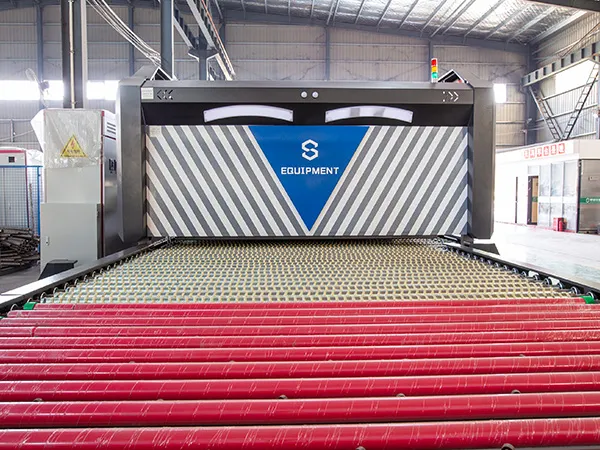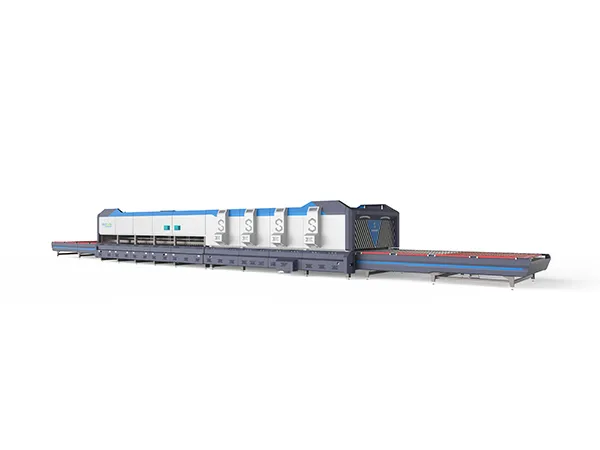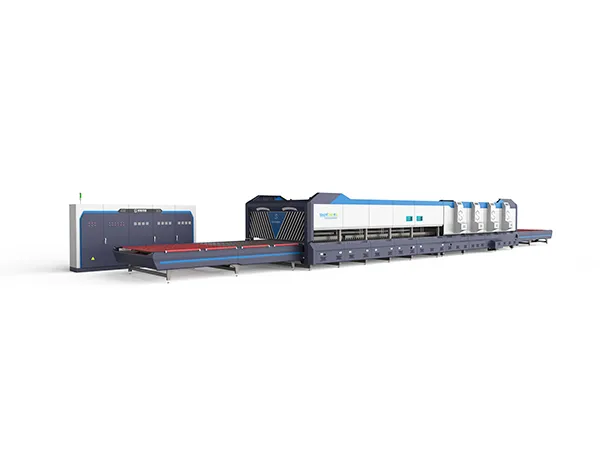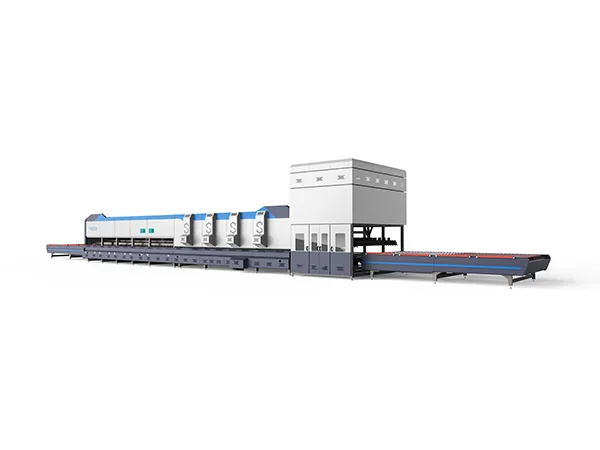A convection tempering furnace is a specialized piece of industrial equipment used in the glass industry to heat-treat glass sheets. The process, known as tempering, involves heating the glass to a temperature just below its melting point and then rapidly cooling it. This treatment strengthens the glass, making it more resistant to impact and thermal stress.
The production process of a convection tempering furnace, used for tempering glass, involves several key steps to ensure the glass is properly heated and cooled for strength and safety.
Convection tempering furnace production process

1. Glass Loading:
The glass sheets are loaded onto the furnace’s conveyor system. The glass can be of various types, sizes, and thicknesses, depending on the specific application.
2. Preheating:
The glass is preheated as it enters the furnace. This helps to gradually increase the temperature of the glass to avoid thermal shock, which could cause breakage. Preheating is typically done in the early zones of the furnace.
3. Heating:
The glass moves into the main heating chamber of the furnace. In a convection tempering furnace, both radiation and convection are used to heat the glass.
Convection heating is where hot air is circulated within the furnace to ensure even heating across the glass surface. This is especially effective for low-emissivity (Low-E) glass, where conventional radiation heating might be less effective.
The glass is heated to a temperature above its annealing point, usually between 600°C and 700°C (1112°F to 1292°F), depending on the type of glass.
4. Soaking:
Once the glass reaches the required temperature, it is soaked at that temperature for a specific period. This allows the heat to penetrate the entire thickness of the glass uniformly, ensuring even tempering.
5. Quenching:
After heating, the glass is quickly moved to the quenching section of the furnace. This is a critical step where the glass is rapidly cooled using powerful air jets.
The rapid cooling process causes the outer surfaces of the glass to solidify quickly while the interior remains somewhat malleable. This difference in cooling rates induces compressive stresses on the surface and tensile stresses in the core, which give the tempered glass its strength.

6. Cooling:
After quenching, the glass continues to cool down to room temperature. The cooling process is carefully controlled to avoid inducing any thermal stress that could lead to breakage.
7. Inspection:
The tempered glass is inspected for any defects such as distortions, cracks, or uneven tempering. Optical properties and surface quality are also checked to ensure they meet the required standards.
8. Unloading:
The tempered glass is unloaded from the furnace conveyor system. It is now ready for further processing or packaging, depending on its intended use.
9. Packaging and Shipping:
The tempered glass is carefully packaged to prevent damage during transportation. It is then shipped to its final destination for installation or further fabrication.

Key Considerations:
Uniform Heating: Uniformity in heating is crucial to prevent any stress concentrations that could lead to glass failure.
Precise Temperature Control: Maintaining precise temperature control in the furnace ensures consistent quality in the tempered glass.
Proper Airflow Management: In convection furnaces, managing the airflow is vital for achieving uniform heat distribution across the glass surface.
This process results in tempered glass that is significantly stronger than untreated glass and, when broken, shatters into small, less harmful pieces, making it ideal for safety applications.










